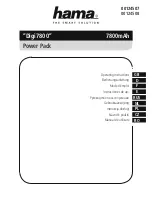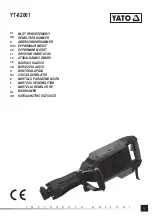
Lucent Technologies 60V Small Broadband Power System J85500Q-1
2 - 4 Product Description
Issue 4 October 1998
•
Thermal alarm: The rectifiers are fan cooled to increase
their reliability. Excess internal temperature caused by fan
failure or other conditions initiates a thermal alarm.
•
Power factor: State-of-the-art circuits in the rectifiers
increase the power factor to near unity.
•
Total harmonic distortion: By controlling the power
factor, the total harmonic distortion is reduced to less than
five percent at full load.
•
Voltage range selection: CPS power modules
automatically accept a wide range of ac input voltages.
•
Dynamic response: Step changes in load over the range of
10 to 90 percent, will not cause the voltage measured at the
point of regulation to overshoot or undershoot more than 5
percent. After the step change, the voltage will return to and
stay within the regulation band within 300 milliseconds.
•
CPS power modules are capable of withstanding repeated
surges of the following wave forms (per ANSI C62.41-1991
requirements) without damage:
–
Rise time of 8 microseconds to 3000 amperes peak
amplitude and decay to 1500 amperes in 20
microseconds.
–
0.5 microsecond-100 kHz ring wave with a peak voltage
of 6000 volts.
Inverter (BPS)
Each BPS inverter, ES635, provides four outputs, with each
delivering 110 Watts of power. The BPS output is 60 volts
polarity-switched at 60 Hz.
The ES635 BPS is a double-wide unit that houses the Alarm
Control Unit (EBM1) and distribution circuit breakers for the
four outputs.
Alarm Control
Unit
An Alarm Control Unit (ACU) is included in the 60-volt/60 Hz
system. The ACU (EBM1) provides plant monitoring and
control features as well as office alarm outputs.
Alarm reporting for the 60-volt/60 Hz CPS plants is typical of
telecommunication battery plants. Alarms are categorized as
















































